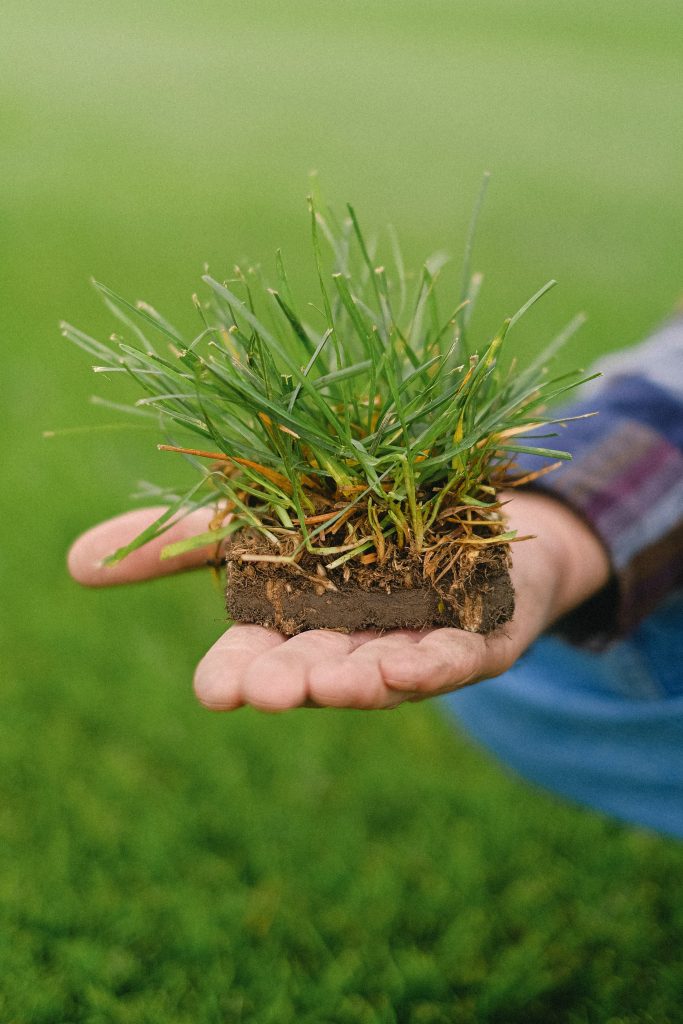
Taking care of the lawn is a common pastime for homeowners all over the country. Knowing when to water, when to cut, and even when to start over with new sod is par for the course. If you recently installed a new layer of sod on your land, there are some important care tips that you should keep in mind. To start, like any live plant, new sod is perishable. Once you purchase it always install it as soon as possible. Working with a professional lawn care company will ensure your new sod has the best chance of survival, for everyone else, our guide can help. For those looking for tips on caring for new sod, we have a few suggestions that will help you grow a healthy, green lawn.
How Can I Keep My Sod From Drying Out?
New sod is prone to becoming dehydrated. If your new sod is installed on top of soil that is dry, it will lose moisture quickly. Dry soil will suck the water out of the sod leaving it under-watered and prone to failure. One way to prevent your new sod from drying out is by watering the ground soil prior to installation. It is also a good idea to install the sod early in the day, or in the evening when the ground is cool. Lower ground temperatures will help prevent new sod roots from going into shock and it will help them to retain their moisture.
The best way to keep new sod from drying out is to maintain a consistent watering schedule. Summer installed sod should be watered often in the day to prevent root shrinkage, and winter installations should have measured watering. It is important to water your sod well for at least a month post-installation to ensure it doesn’t dry out regardless of the climate or the season. Hiring a professional to manage your new sod care is the best option, but you can also install a timed sprinkler to ensure constant moisture.
![Caring For New Sod [infographic]](https://theturfgrassgroup.com/wp-content/uploads/2021/03/Caring-For-New-Sod-infographic.jpg)
Watering Tips For New Sod
When caring for new sod proper watering is the key to healthy growth. In general, you should always water the soil prior to installing new sod. This will prevent the soil from sucking moisture out of the roots and causing the sod to fail. Once you have installed the new sod, your watering cycle will depend on the quality of your irrigation system, your soil type, and the climate in your area. New sod installed over clay soil will need to be watered at least four times daily. New sod installed over sandy loam will need to be watered at least seven times daily.
Each watering should only consist of enough water to wet the roots. New sod is not able to soak up much water at once, and too much water will cause root rot. You never want soggy soil under your new sod. Start watering early in the morning just after sunrise and space out your sessions to allow the roots time to soak up all of the moisture. Stop watering your new sod in the evening, or right around sundown. The roots will soak up water much slower when the sun is down, which can make it easy to overwater them. Too much water will foster fungus under the roots which can cause your new sod to fail.
Is It Possible To Overwater Sod?
Grass loves water, however, new sod is different. It is possible to overwater new sod, and it can even happen easier than you expect. New sod has very short roots which makes it harder for it to retain a lot of moisture. It is better to water new sod in a short burst with less, as opposed to large amounts of water at once. Overwatering new sod will prevent the roots of the sod from getting the oxygen they need to thrive. If you are planting new sod in warm weather, overwatering can also lead to disease. One way to tell if your sod is being overwatered is to check the bottom of the soil a few minutes after watering. If the soil under the sod is still soggy five minutes after your watering session has ended, chances are you are overwatering your new sod.
How Long Should You Avoid Walking On New Sod?
Of all the tips we have for caring for new sod, the most important is not walking on it too early. You should keep pets, children, and everyone else off of newly plant sod until at least the first mowing. Watering the sod at regular intervals will help the roots to establish themselves, and until they are firmly entrenched, your sod is vulnerable. Walking on the sod before the roots have taken cold can cause root failure or poor rooting.
How Long Does It Take For Sod To Take Root?
New sod roots are very short, so it is important to treat them with care and ensure they are not overwatered. Usually, roots will start the process of establishing themselves with a week of installation. In some cases, it can take as long as two weeks for the process to really get underway. The climate in your area, the season you plant your sod, and your soil quality will all play a part in determining how long it takes for the new sod roots to take hold. Take care never to overwater the sod while it is in the rooting stage. Soggy sod can lead to root rot and eventually new sod failure. Instead, water the sod in smaller amounts, several times during the day.
When caring for new sod, the rooting period is the most critical. Take care not to water your sod too much, or you will prevent the roots from creating a strong bond with the soil. As you get closer to the first mowing period, you should reduce the amount of water you apply to the new sod. This will allow the roots the time they need to firmly take hold of the soil as it firms up for the first mow.
If the soil is too soft during your first mow, you can end up pulling the sod out by its roots, and you will end up having to start over with new sod. Your first mow should be scheduled two to three weeks after the sod was installed. If you installed your sod in the winter, the roots will need at least a month to establish themselves ahead of your first mow.
Should New Sod Turn Brown?
New sod is carefully cultivated before it is sold for installation. It is cultivated in an environment that offers a perfect balance of nutrients, sunlight, and moisture which allows it to thrive. New sod in general is very healthy and should not turn brown. But carefully caring for new sod is absolutely critical. Like any living thing, sod is perishable and will need to be installed as soon as possible. If the installers wait too long, the sod may start to die and it will begin to turn brown.
Drought or lack of adequate moisture will also cause new sod to turn brown. If the roots are not getting the moisture they need, they enter a state of dormancy. During the dormant stage, new sod will become brown, however, if it is not watered, it will die. Anytime you notice new sod with brown patches, there is a problem that is generally linked with moisture or lack of proper nutrients. If the new sod is mostly yellow, it can still be saved. New sod that is mostly brown will be much harder to revive.
What Fertilizer Is Best For Sod?
New sod should be fertilized approximately five weeks after it was installed. Caring for new sod doesn’t only entail proper watering and mowing, it also includes extra root nourishment. Fertilizing the sod will help the roots continue to establish themselves and it will also support healthy growth. The type of fertilizer you use will depend mainly on the sod you have installed, and the type of soil on your property.
Liquid fertilizers are the best option for new sod. Liquids are able to soak down into the surface of the soil to help feed the roots and condition the area just under the ground. A lawn care professional will be able to recommend the best brand or type of fertilizer for your species of sod and your specific climate. Fertilizing should continue year-round, even after your sod has firmly taken root. Aerate your lawn six months after installing the new lawn, and then once a year afterward to keep the soil healthy.
